I found this very interesting information on Rootsweb that was posted by another descendant of someone in Kedar's neighborhood of St. Bride's Parish, Norfolk, Virginia. The war happened in Kedar's back yard! Yikes!
Source: Lossing, Field-Book of the American Revolution, 1850
We have already considered the flight of Dunmore from Williamsburg, and his attempt to destroy Hampton, and have alluded to his raising the royal standard at Norfolk, and proclaiming martial law throughout the colony, and freedom to the slaves. He made Norfolk harbor the rendezvous for the British fleet, and determined there to establish the headquarters of ministerial power in the Old Dominion. Previous to making an effort to take possession of the town, he sent a few soldiers and sailors ashore, under cover of the guns of the ships, to carry off John Holt's printing establishment, which was doing good service to the patriot cause. Holt, though a high churchman, was an ardent and uncompromising Whig. This outrage was committed, and two of Holt's workmen were taken away prisoners, without resistance from the people. The Tories were numerous, and the Whigs were overawed. The corporation of Norfolk sent a letter of remonstrance to Dunmore; it was answered by insult. This insult was followed by violence. Hampton was attacked, and depredations were committed upon the shores of the Elizabeth River. Repelled with spirit, Dunmore resolved to strike a blow of terror. With his motley force he penetrated Princess Anne county, to plunder and lay waste. He was successful, and emboldened thereby, declared open war. All Lower Virginia was aroused, and the government directed its whole attention to the portion of the state thus menaced. It was at this time that Dunmore's attempt to bring the Indians upon the colonists was made known. The people burned with fierce indignation. Colonel Woodford, who afterwards became a brigadier general in the Continental army, was sent with a detachment of minute-men into Norfolk county, and the militia of that section were called to arms. Adjutant Bullit accompanied him. Perceiving these preparations, Dunmore became alarmed. He constructed batteries and intrenchments at Norfolk, armed the blacks and Tories, and ordered the country people to send their cattle to the city for his use, under penalties for disobedience.
Apprised of the movement of Woodford, and the point from whence he might expect the approach of the Virginians, Dunmore resolved to fortify the passage of the Elizabeth River at Great Bridge. His force consisting of only about two hundred regulars, and a corps of Norfolk volunteer Loyalists, he beat up for recruits among the negroes and the vilest portion of society. He cast up breast-works upon the island, on the Norfolk side of the Great Bridge, and furnished them amply with cannons. This presented a serious obstacle to the Virginians, who could approach the batteries only upon a narrow causeway. With a motley force of regulars and volunteers, negroes and vagrants, in number about six hundred, Dunmore garrisoned his fortress. The Virginians constructed a small fortification, of semicircular form, near the western end of the causeway, the remains of which were yet quite visible when I visited the spot. From the breast-work a street ascended about a hundred yards to a church, where the main body of the patriots were encamped
On Saturday morning, the ninth of December, before daylight, Dunmore, who remained at Norfolk, ordered Captains Leslie and Fordyce to attack the redoubt of the patriots. He had been informed that they were few in number, and weak in skill and experience; he, therefore, felt certain of success. When the Virginians had beaten the reveille, Captain Fordyce, with about sixty grenadiers and a corps of regulars, was ordered to the attack. After firing one or two cannons and some musketry, he pressed forward, crossed the Great Bridge, burned the houses and some shingles upon the island, on which the tide-mill now stands, and made an attack upon the guards in the breast-work. The fire of the enemy was returned, and the assailants were thrown into confusion. Fordyce rallied them, and having brought two pieces of cannon over the bridge, and placed them on the island in such a position as to command the breast-work, led his men (about one hundred and twenty in number) steadily across the causeway, keeping up a constant and heavy fire as they approached Woodford's redoubt. Lieutenant Travis, who commanded in the redoubt, ordered his men to reserve their fire until the enemy came within fifty yards, and then, with sure aim, pour volley after volley upon the assailants as rapidly as possible. Believing the redoubt to be deserted, Fordyce waved his hat over his head, shouted "The day is our own," and rushed forward toward the breast-work. The order of Lieutenant Travis was obeyed with terrible effect. His men, about ninety in number, rose to their feet and discharged a full volley upon the enemy. The gallant Captain Fordyce, who was remarked by the riflemen, fell, pierced by fourteen bullets, within fifteen steps of the breast-works. His followers, greatly terrified, retreated in confusion across the causeway, and were dreadfully galled in their rear.
Captain Leslie, who, with about two hundred and thirty negroes and Tories, had remained upon the island at the west end of the bridge, now rallied the regulars, and kept up the firing of the two field-pieces. Colonel Woodford, with the main body of the Virginians, left the church at the same time, and advanced to the relief of the garrison in the intrenchments. Upon his approaching line the field pieces played incessantly, but the Virginians pressed steadily forward. Colonel Stevens, of the Culpepper battalion, went round to the left, and flanked the enemy with so much vigor that a rout ensued and the battle ended. The enemy left their two field-pieces behind, but took care to spike them with nails, and fled in confusion to their fort on the Norfolk side. The battle lasted only about twenty-five minutes, but was very severe. The number of the enemy slain is not precisely known. Thirty-one killed and wounded fell into the hands of the patriots, and many were carried away by their friends. Gordon says their whole loss was sixty-two. They fought desperately, for they preferred death to captivity, Dunmore having assured them that, if they were caught alive, the savage Virginians would scalp them. It is a remarkable fact that not a single Virginian was killed during the engagement, and only one man was slightly wounded in the hand, notwithstanding the two field-pieces upon the island hurled double-headed shot as far as the church, and cannonaded them with grape-shot as they approached their redoubt. The wounded who fell into the hands of the Virginians were treated with the greatest tenderness, except the Tories, who were made to feel some of the rigors of war. The repulse of the British at Great Bridge greatly exasperated Dunmore, who had remained in safety at Norfolk; and in his rage he swore he would hang the boy that brought the tidings. The motley forces of his lordship were dispirited by the event, and the Loyalists refused further service in arms unless they could act with regulars. The Virginians, on the other hand, were in high spirits, and Colonel Woodford determined to push forward and take possession of the city. He issued a pacific proclamation to the people of Princess Anne and Norfolk counties, and many of the inhabitants repaired to his camp. Those who had joined Dunmore on compulsion were treated kindly; those who volunteered their services were each hand-cuffed to a negro fellow-soldier and placed in confinement. On the fourteenth, five days after the battle at the bridge, Woodford entered the city in triumph, and the next morning, Colonel (afterward General) Robert Howe, with a North Carolina regiment, joined them, and assumed the command of all the patriot forces. Dunmore, in the mean while, had caused the intrenchments at Norfolk to be abandoned, the twenty pieces of cannon to be spiked, and invited the Loyalists and their Families to take refuge with him in the ships of the fleet. The poor negroes who had joined his standard were left without care or protection, and many starved.
Distress soon prevailed in the ships; famine menaced them with its keen fangs. Parties sent on ashore to procure provisions from the neighboring country were cut off, or greatly annoyed by the Virginians, and supplies for the multitude of mouths became daily more precarious. The ships were galled by a desultory fire from the houses, and their position became intolerable. At this juncture the Liverpool frigate, from Great Britain, came into the harbor, and gave boldness to Governor Dunmore. By the captain of the Liverpool, he immediately sent a flag to Colonel Howe, commanding him to cease firing upon the ships and supply the fleet with provisions, otherwise he would bombard the town. Thc patriots answered by a flat refusal, and the governor prepared to execute his barbarous threat. The morning of the thirty-first of December, Dunmore gave notice of his design, in order that women and children, and the Loyalists still remaining, might retire to a place of safety. At four o'clock on the morning of the first of January, the Liverpool, Dunmore, and two sloops of war, opened a heavy cannonade upon the town, and parties of marines and sailors went on shore and set fire to the warehouses. The wind was blowing from the water, and the buildings being chiefly of wood and filled with pitch and turpentine, the greater part of the compact portion of the city was in flames before midnight. The conflagration raged for fifty hours, and the wretched inhabitants, Whigs and Tories, saw their property and homes licked up by the consumer, and their heads made shelterless in the cold winter air, without the power of staying the fury of the destroyer or saving the necessaries of life. Not content with laying the town in ashes, the petty Nero heightened the terror of the scene and the anguish of the people by a cannonade from the ships during the conflagration. Parties of musketeers, also, went to places where people were collected and attacked them. Horror reigned supreme, and destitution in its worst features there bore rule. Yet a kind Providence guarded the lives of the smitten inhabitants; and during the three days of terror while the fire raged, and cannon-balls were hurled into the town in abundance, not one of the patriot troops was killed, and only three or four women and children were slain in the streets. Seven persons were wounded. The invading parties were uniformly driven back to their ships with loss. In these repulses the intrepid Stevens was conspicuous, and displayed all the courage of a veteran soldier. Colonel Stevens and his little band remained upon the site of Norfolk, until February, when, having removed the families and appraised the dwellings which remained, he caused them to be destroyed, that the enemy might have no shelter. Thus the most flourishing town in Virginia was made an utter desolation, but its eligible location insured its phoenix-like resurrection, and again, when peace returned, "beauty for ashes" soon characterized the spot. Howe divided his troops; some were stationed at Kemp's Landing, some at the Great Bridge, and others in Suffolk, whither most of the fugitives from the city fled, and found open-handed hospitality in the interior.
Dunmore's movements on the coast compelled the Virginians to exercise the most active vigilance. After Howe abandoned the site of Norfolk, the fugitive governor erected barracks there, but being prevented from obtaining supplies from the neighboring country, he destroyed them, sailed down the Elizabeth River, and after maneuvering for a while in Hampton Roads, he finally landed upon Gwyn's Island, in Chesapeake Bay, on the east side of Matthew's county, near the mouth of the Piankatank River. This island contains about two thousand acres, and was remarkable for its fertility and beauty. Dunmore's force consisted of about five hundred men, white and black. He cast up some intrenchments, and built a stockade fort, with the evident intention of making that his place of rendezvous while plundering and desolating the plantations on the neighboring coast. General Andrew Lewis, then in command of a brigade of Virginia troops, was sent by the Committee of Safety to dislodge Dunmore. On the eighth of July, he erected two batteries (one mounting two eighteen pounders, and the other bearing lighter guns), nearly opposite the point on the island where the enemy was encamped. The next morning, at eight o'clock, Lewis gave the signal for attack, by applying a match, himself, to an eighteen pounder. The ball passed through the hull of the Dunmore, which was lying five hundred yards distant; a second shot cut her boatswain in twain, and a third shivered one of her timbers, a splinter from which struck Lord Dunmore, wounded his leg, and smashed his china. Both batteries then opened upon the governor's fleet, camp, and works. Terror now prevailed in the fleet, and confusion in the camp. Almost every ship slipped its cables, and endeavored to escape. Dunmore's batteries were silenced; the tents of his camp were knocked down, and terrible breaches were made in his stockade. The assailants ceased firing at nine o'clock, but no signal of surrender being given, it was renewed at meridian.
Early on the following morning, having collected some small craft in the neighborhood, Lewis ordered Colonel M'Clanahan, with two hundred men, to cross to the island. The enemy evacuated before the Virginians landed, and fled to the ships, leaving their dead and many wounded behind them. A horrible scene was there presented. Half-putrefied bodies lay in almost uncovered shallow graves, and the dying, scattered in various directions, were filling the air with their groans. The island was dotted with graves, for the small-pox and fevers had raged with great violence in the fleet and in the camp for some time. Some were burned in the brush huts, which took fire; and others, abandoned to their fate, had crawled to the sandy beach and were perishing. Only one man of the assailants was killed. Captain Arundel, who was slain by the bursting of a mortar of his own invention. The loss of the enemy could not be ascertained, but it must have been considerable.
On leaving the island, Dunmore caused several of his vessels, which were aground, to be burned, and with the remnants of his fleet he sailed out of the Chesapeake, entered the Potomac, and, after plundering and desolating several plantations on that river above Aquia Creek, he returned to Lynn Haven Bay, where he dismissed some of the ships for the Bermudas, some to the West Indies, and some to St. Augustine, with booty, among which was almost a thousand slaves. He soon joined the naval force in New York, and toward the close of the year sailed for England.
After the departure of Dunmore, the Virginia coast enjoyed comparative quiet until 1779, when a British fleet, under Admiral Sir George Collier, entered Hampton Roads. He sailed up the Elizabeth River and attacked Fort Nelson, which had been erected by the Virginians a little below Portsmouth to secure that place, Norfolk, and the navy-yard at Gosport from attack. The fort was garrisoned by about one hundred and fifty men under Major Thomas Matthews, who, on the approach of Collier, and General Matthews, who commanded the British land forces, abandoned it, and retreated to the Dismal Swamp, leaving the American flag flying from the ramparts. The British took possession of Portsmouth, Norfolk, Gosport, and Suffolk, on the eleventh, all being abandoned. Great quantities of stores, ammunition and cannons, fell into the hands of the invaders. A large quantity of naval stores were carried away; the residue, and a great quantity of tobacco, were burned or otherwise destroyed. After pillaging Portsmouth and destroying Suffolk, the fleet, with General Matthews and his land forces, well to sea, returned to New York, and assisted Sir Henry Clinton in taking possession of the fortresses on Stony and Verplanck's Pointe, on the Hudson.
Again, in 1780, hostile vessels were in the Elizabeth River. Brigadier-general Leslie, with about three thousand troops from New York, landed at Portsmouth, and took possession of every kind of public property there and in the vicinity. Leslie was to cooperate with Cornwallis, who proposed to enter Virginia from the south. He did not remain long, for Cornwallis, hearing of the defeat of Ferguson at King's Mountain, hastily retreated; and Leslie, on being advised of this, left for Charleston, for the purpose of joining the earl in the Carolinas. Again, in 1781, hostile troops, under Arnold, were on the shores of the Elizabeth. That expedition we will consider presently...[p. 333]
[p. 334]... We have mentioned on page 230 the retreat of Arnold down the James River after his depredations at Richmond. He proceeded to Portsmouth, where he took post, and began to fortify on the twentieth of January. Generals Steuben, Nelson, Weedon, and Muhlenberg were actively engaged in collecting the militia to defend the country and drive out the invaders, and Washington devised a plan for capturing the traitor. Having learned that four British ships, which had been lying in Gardiner's Bay, off the east end of Long Island, had gone eastward, and that two of them were disabled in a storm, he requested Rochambeau to send the French fleet (then commanded by D'Estouches, the successor of Admiral Ternay) and a detachment of his land forces to the Chesapeake. At the same time, he sent La Fayette thither with a detachment of twelve hundred infantry. The plan was to attack the traitor by sea and land simultaneously, so that he could not escape from the Elizabeth River. A part, only, of the French fleet was sent, under De Tilley, with orders to attempt the destruction of the British fleet there. They took or destroyed ten small vessels. They also captured the Romulus, a handsome, well-furnished vessel, at the entrance of Lynn Haven Bay, and carried her into Newport harbor. This expedition accomplished nothing respecting Arnold; and Washington, anxious to have co-operation with La Fayette and the Virginia militia against the recreant, went to Newport and held an interview with Rochambeau. The result was that the French fleet left Newport on the eighth of March. They were followed by the British fleet, then in Gardiner's Bay, under Admiral Arbuthnot, who intercepted the French at the entrance of the Chesapeake. They drew up in battle order, eight ships on a side, and a partial engagement ensued. Neither party could justly claim a victory. The French abandoned their design of co-operating with the marquis, and returned to Newport. The plan, so well arranged and so nearly accomplished, was defeated. La Fayette marched back to the head of Elk, and Arnold was left to the skill and bravery of the Virginia troops near him. These were inadequate to drive him from Portsmouth, and be remained there until about the middle of April, when he was joined by a detachment under Major-general Phillips. The two commanders now determined to overrun all the fertile portion of Virginia lying near the James River, and on the twenty-fourth of April they reached City Point with twenty-five hundred troops...
Subscribe to:
Post Comments (Atom)









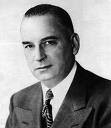





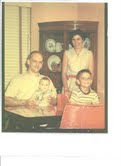

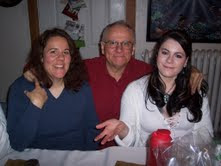







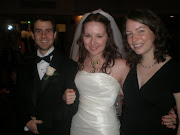




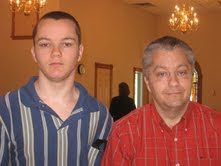
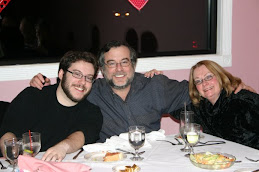




No comments:
Post a Comment